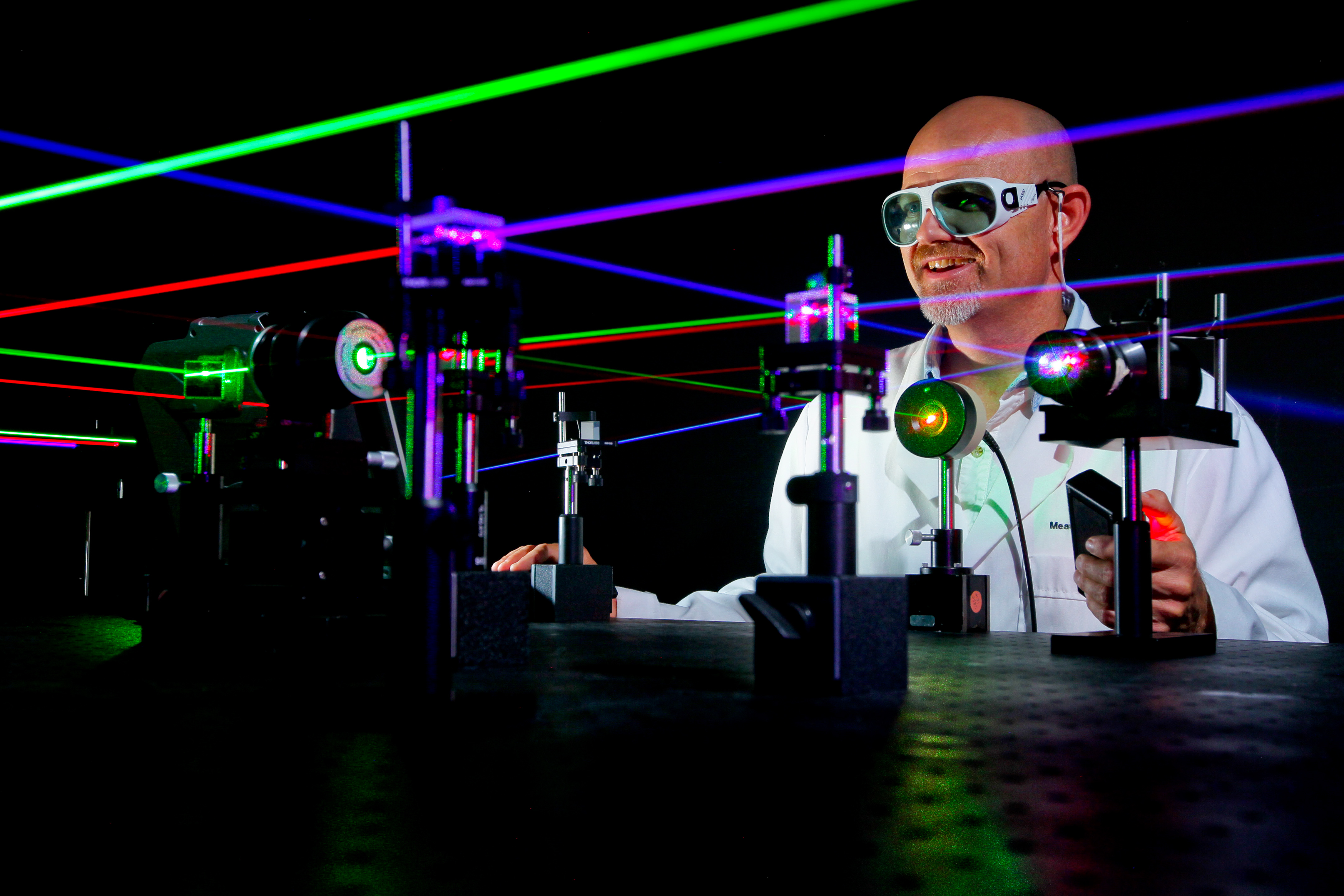
ARLINGTON, Va.—Faced with enemies catching up to America’s military technological superiority, the Navy is drafting a long-range research and development plan that will focus on key areas the service predicts will drive warfare into the 2040s.
“Our historic position as the world’s technology leader is facing unprecedented challenges. Adversaries are closing the gap and accelerating pace while budget constraints create a drag on our own rate of progress. We must regain and retain a wider decisive margin in our technology edge,” said Vice Adm. David Johnson, the principal military deputy the Navy’s chief weapons buyer said during the AUVSI Unmanned System Defense conference on Tuesday.
“Recognizing this reality, the Department of the Navy is refocusing its efforts to reinsure we retain and increase technological advantage and maritime superiority in an increasingly dynamic [world].”
The 30 Year Research and Development Plan for the Research, Development, Test and Evaluation (RDT&E) for the Navy’s Research Development and Acquisition arm (RDA) will zero in on areas the Navy thinks it’ll need to in the 2045 battle space.
The strategy, “is examining core principles, like providing stealth and ensuring resilient high bandwidth communications and describing a number critical and specific long-term battle space capabilities like autonomous, cognitive exploitation and decision support, all-domain energy harvesting, decoys and confusion generation technologies,” Johnson said.
The effort is aimed at accelerating “advanced technologies in six areas, including autonomous systems, materials, manufacturing technologies and electromagnetic naval warfare.”
While Johnson was short on specifics—such as timelines—the plan would be a first for the Navy’s R&D community and reflects the DoN’s long-range shipbuilding and aviation plans, in which the service lays out what it thinks it needs for the next three decades.
If the effort lines up with the how the Navy plots its ship and aviation needs “this is a good idea,” Bryan Clark, a naval analyst at the Center for Strategic and Budgetary Assessments and former aide to retired former Chief of Naval Operations Adm. Jonathan Greenert, told USNI News on Wednesday.
“Why this is important is even if a particular ship or aircraft won’t show up until 2035, for example, RDA can back up from there and lay out in the plan the technology maturation efforts necessary to get to that platforms in 2035,” Clark said.
The move comes as the Navy is taking hard looks in developing new aviation and surface platforms to replace the capabilities of the service’s existing tactical fighters and guided-missile ships.
For example, it’s conceivable the results of the Navy’s Next Generation Air Dominance program— due in the 2030s — could field high-energy weapons or the Navy’s next large surface combatant could be armed with hypersonic projectiles. Baking those research needs into the RDA research plan could ease some of the technical challenges in introducing new weapon systems and sensors into ships and aircraft—never an easy task in both ship and aircraft development.
Revelation of the Navy’s R&D long-range plan comes as the Pentagon as a whole grapples with its technological future as it developed the so-called third offset strategy to ensure U.S. technological dominance as competitors catch up with the U.S. leads in guided weapon and sensor technologies.
Additionally a strategic focus on Navy’s R&D priorities could communicate to defense research efforts outside of the Navy—such as the Air Force Research Laboratory, DARPA and other internal DoD research and development efforts—that their science and technology development projects could be of use to the DoN.
“Sometimes those other organizations may be working on S&T projects that could help later with Navy systems, but we may end up duplicating efforts if we don’t take them into account and ensure they are aware of Navy interest and even have Navy financial support,” Clark said. “This kind of plan would help identify where various organizations’ work can come together and identify where RDA may have to send funds to a particular organization or company to keep it going.”
Clark said the Navy’s challenge was to create product to be useful to the service internally, “rather than just having a communication tool that is informative for the public, but isn’t specific enough to actually help make decisions on where to spend R&D money.”





